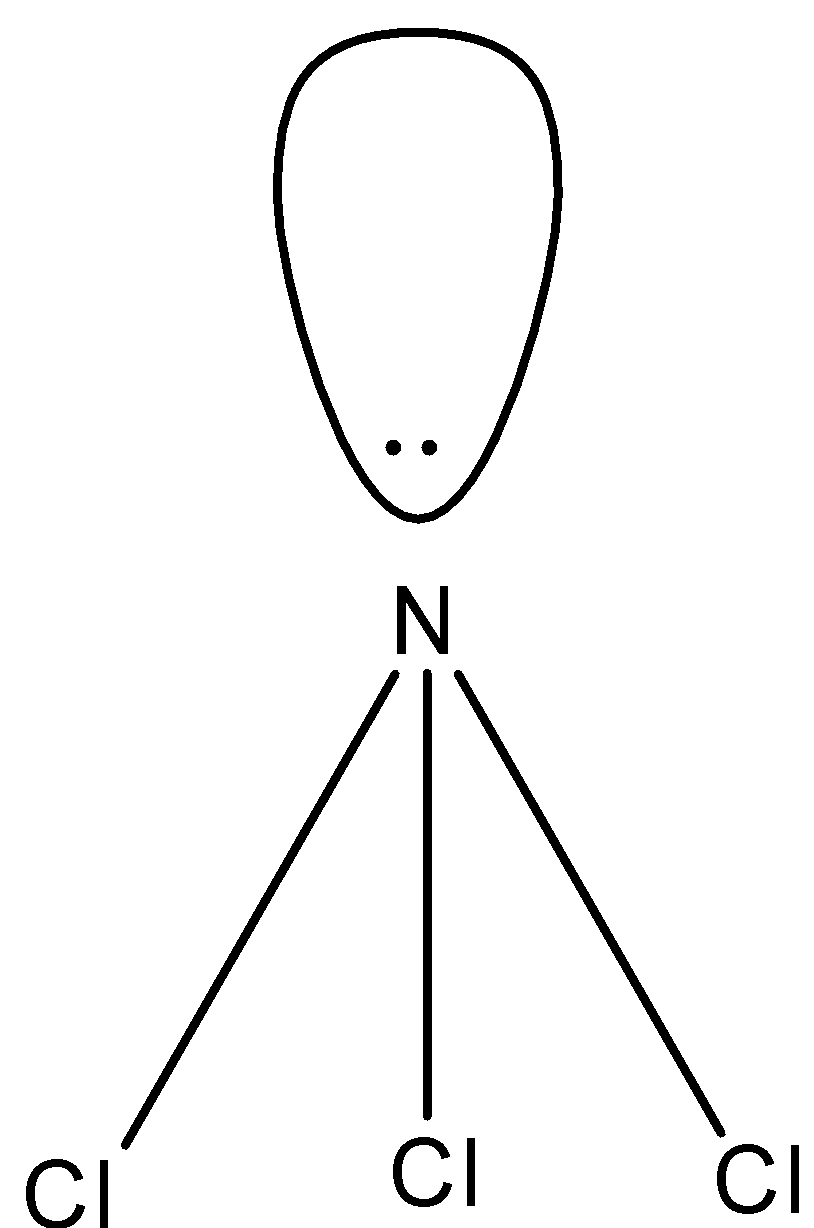Question
Question: The \(BC{{l}_{3}}\) is a planar molecule whereas \(NC{{l}_{3}}\) is pyramidal because: (a)- Nitrog...
The BCl3 is a planar molecule whereas NCl3 is pyramidal because:
(a)- Nitrogen atom is smaller than the boron atom
(b)- BCl3 has no lone pair but NCl3 has a lone pair of electrons
(c)- BCl bond is more polar than NCl bond
(d)- NCl bond is more covalent than BCl bond
Solution
If the central atom is joined with two atoms then the shape is expected to be linear, if the central atom is joined with 3 atoms then the shape is expected to be trigonal planar, if the central atom is joined with 4 atoms then the shape is expected to be tetrahedral and so on. But if the molecule has a lone pair of electrons then the geometry of the compound will change.
Complete Solution :
In BCl3, boron is the central atom and it is the element of group 13 of the p-block, so it will have three valence electrons in its valence shell for the formation of bonds. In this molecule, there are three chlorine atoms and all the three valence electrons of the boron are involved in the bond formation. So, if the central atom is joined with 3 atoms then the shape is expected to be trigonal planar, therefore, its structure will be trigonal planar. The structure is given below:

- In NCl3, nitrogen is the central atom and it is the element of group 15 of the p-block, so it will have five valence electrons in its valence shell for the formation of bonds. In this molecule, there are three chlorine atoms, and three out of five valence electrons of the nitrogen are involved in the bond formation, and the rest two electrons will be the lone pair. Now, due to this lone of electrons, the bond pairs will come close to each other forming a pyramidal shape. The structure is given below:

Therefore, the correct answer is option (b)- BCl3 has no lone pair but NCl3 has a lone pair of electrons.
So, the correct answer is “Option B”.
Note: It must be noted that the repulsion between the bond pair-bond pair is less than the repulsion between the lone pair-bond pair. This will decrease the bond angle. As the number of lone pairs increases the repulsion also increases.
